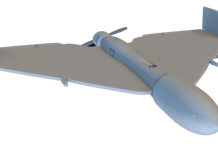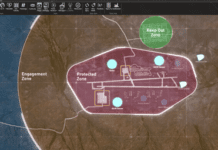This post is also available in:
 עברית (Hebrew)
עברית (Hebrew)
Remote human performance monitoring is the focus of a new development. For athletes or people with health conditions, an immediate physical “status update” would be a great convenience. For the warfighter in the field, it could be the crucial element of a successful mission. Current non-invasive solutions such as skin patches do not fit all cases, and this approach may not be ideal for US Air Force mission requirements.
Monitoring and recording the physical condition of pilots or soldiers in the field can enable a better understanding of surroundings, provide an added degree of safety, and help define mission parameters. In order to be practical, however, such a monitoring device has to be compact, unobtrusive, and easy to use.
The US Air Force Research Laboratory has started working on a government-industry partnership with this regard. According to AFRL Principal General Engineer Dr. Ben Leever, “there are limitations to these non-invasive approaches .. we can potentially get much higher quality data from approaches that are minimally invasive.”
To further investigate an alternate approach, in 2018, AFRL entered into a Cooperative Research and Development Agreement with Profusa, Inc., a company specializing in the development of biosensor technologies. Through an investment from both DARPA as well as the private sector, the startup researched and developed minimally-invasive physiological sensing technologies over the past decade.
The novel approach involves a two-part monitoring system in which tiny flexible hydrogel sensors are injected under the skin, integrating into the surrounding tissue. A lightweight optical reader worn on the skin detects a fluorescent signal from the embedded sensors, resulting in a data readout that can be sent to a smartphone or other data collection device.
According to AFRL Scientist and Program Manager Dr. Jeremy Ward, this minimally-invasive approach provides reliable and repeatable data, while solving the foreign body response challenge that is common with most biosensors that are embedded under the skin. This response occurs when the body defensively builds up collagen around a foreign object. Such an occurrence greatly decreases the embedded sensor’s effectiveness at providing reliable information about a human’s biochemistry.
“With this solution, the biosensor in the body is the consistency of a contact lens and is smaller than a grain of rice,” said Ward. “While there are no electronics that go inside the body, the biosensor is engineered with specific molecules that respond to specific wavelengths of light. Depending on the composition of those molecules, their optical response changes based on the local concentration of oxygen, glucose, or other analytes in the body.”
To take the technology to the next level, AFRL recently partnered with NextFlex, a consortium of government, industry, and academic institutions dedicated to advancing the manufacturing of flexible hybrid electronics within the U.S. Through an AFRL investment, the NextFlex team worked with Profusa to make improvements to the sensor patch worn on the skin, adding flexible characteristics and bringing it to a state of maturity at which it could undergo testing for defense applications, according to afmc.af.mil.


























